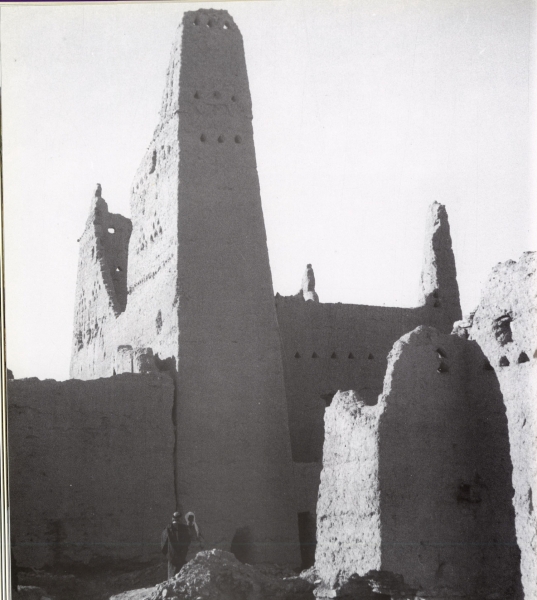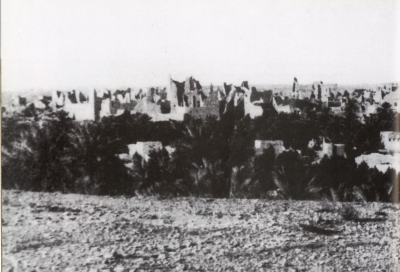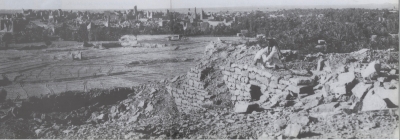

The Financial System of the First Saudi State refers to the financial system applied by the First Saudi State throughout its history, between 1727 and 1818. It is similar to the financial system applied by the Islamic State during the Early Islamic Era.
Overseeing the financial system of the First Saudi State
The First Saudi State has established a financial system based upon the provisions of Islamic Sharia. Bayt al-Mal (treasury), tasked with overseeing the funds of the state, controlling its financial affairs, and regulating and safekeeping its expenditure and resources, was established accordingly.
Bayt al-Mal had an administrative structure within the state. It had an independent building located in the vicinity of the seat of government, Salwa Palace, in Diriyah. It overlooks an open adjacent area that was used for unloading camel caravans arriving from the various regions of the state.
During the era of the First Saudi State, Bayt al-Mal contributed to organizing the state's economic affairs. This was ensured upon deploying efforts aimed at developing and protecting the state's resources for the benefit of the state and for ensuring its economic security. It was also keen on safekeeping and protecting public funds and preserving private property based upon fairness and equality, while ensuring that no harm or damage is inflicted thereon.
Sources of income of Bayt al-Mal in the First Saudi State
During the era of the First Saudi State, Bayt al-Mal relied on specific sources of income, including:
- Zakat: Considered the primary source of income of Bayt al-Mal and one of the elements ensuring social solidarity in Islam, it was collected by competent officers from the various regions of the state and was allocated in favor of the poor. It was divided into four categories, agricultural zakat amounting to 10 percent and covering agricultural products, fruits, dates, and grains, cash zakat, amounting to a quarter of a tenth or 2.5 percent and covering gold and silver, animal zakat, covering camels, sheep, and cows, and trade zakat, amounting to a quarter of a tenth or 2.5 percent.
- Prizes and returns: Representing the second source of income and one of the main sources of income for Bayt al-Mal, it results from conquests launched by the state's regions. Bayt al-Mal received a fifth of such prizes, while the rest was distributed in favor of the soldiers, pursuant to the provisions of Islamic Sharia.
Returns were retrieved from the enemies. They did not involve engaging in wars and their sum was entirely deposited with Bayt al-Mal.
- Penalties: Among the most significant sources of income for Bayt al-Mal, they consisted of specific penalties imposed by the state for various reasons, such as breaching obligations, security breaches, or failing to keep promises. These penalties differed at the discretion of the Imam and would increase in the event of a violation recurrence.
Aspects of disbursement in the First Saudi State
The First Saudi State opted for several aspects for disbursing the financial resources of Bayt al-Mal, including the amounts paid by the state in favor of those entitled to Zakat, such as the poor and the disadvantaged, each according to their needs and share aimed at guaranteeing a decent life, pursuant to the provisions of Sharia.
Other aspects of disbursement included the allocations made by the state out of the funds of Bayt al-Mal in favor of travelers who lost their way or those who did not hold sufficient amounts while traveling. In this respect, the Imam would provide them with the required assistance, such as accommodation, food, and some money to help them travel to their countries. This practice was common across the state, where princes would allocate amounts in favor of travelers passing through the regions they governed.
The state would also spend funds available with Bayt al-Mal to build mosques, hold educational sessions, and allocate financial amounts in favor of scholars, imams, muezzins, teachers of the Noble Quran, and students. They would also allocate amounts for officers responsible for collecting Zakat, settling the salaries of the regions' governors, judges, soldiers, and Hisba, and the princes leading armies and taking part in managing the state's affairs.
Financial amounts were allocated for covering the needs and expenditures of the state, supporting those harmed by calamities and disasters occurring within the state, covering the needs and expenditures of some regions where the income of their Bayt al-Mal was not sufficient in this respect, and disbursing amounts in favor of social projects and charity.
Related quizzes
Related articles

